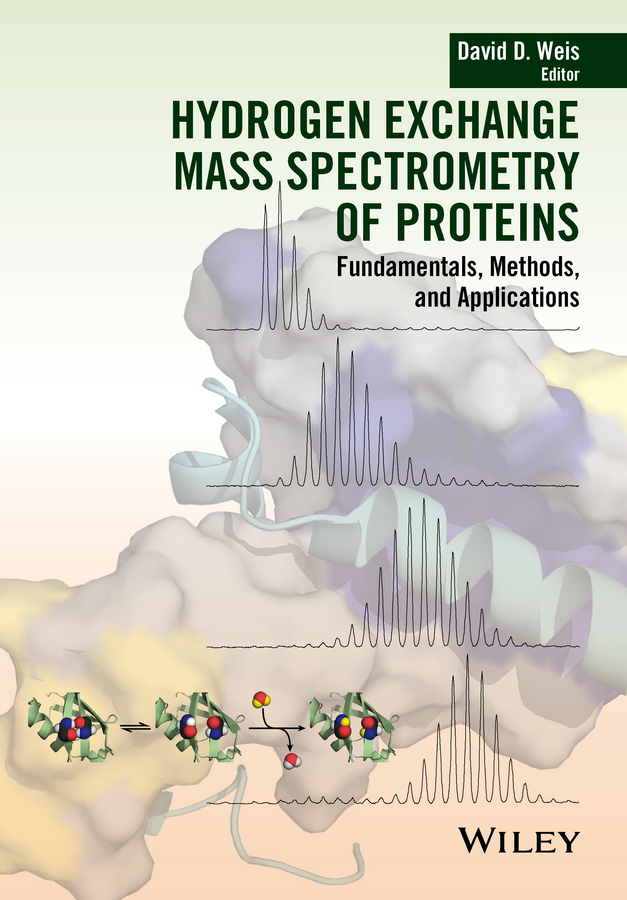Электронная книга: David Weis D. «Hydrogen Exchange Mass Spectrometry of Proteins. Fundamentals, Methods, and Applications»

|
Hydrogen exchange mass spectrometry is widely recognized for its ability to probe the structure and dynamics of proteins. The application of this technique is becoming widespread due to its versatility for providing structural information about challenging biological macromolecules such as antibodies, flexible proteins and glycoproteins. Although the technique has been around for 25 years, this is the first definitive book devoted entirely to the topic. Hydrogen Exchange Mass Spectrometry of Proteins: Fundamentals, Methods and Applications brings into one comprehensive volume the theory, instrumentation and applications of Hydrogen Exchange Mass Spectrometry (HX-MS)– a technique relevant to bioanalytical chemistry, protein science and pharmaceuticals. The book provides a solid foundation in the basics of the technique and data interpretation to inform readers of current research in the method, and provides illustrative examples of its use in bio- and pharmaceutical chemistry and biophysics In-depth chapters on the fundamental theory of hydrogen exchange, and tutorial chapters on measurement and data analysis provide the essential background for those ready to adopt HX-MS. Expert users may advance their current understanding through chapters on methodsincluding membrane protein analysis, alternative proteases, millisecond hydrogen exchange, top-down mass spectrometry, histidine exchange and method validation. All readers can explore the diversity of HX-MS applications in areas such as ligand binding, membrane proteins, drug discovery, therapeuticprotein formulation, biocomparability, and intrinsically disordered proteins. Издательство: "John Wiley&Sons Limited"
ISBN: 9781118703731 электронная книга Купить за 9652.07 руб и скачать на Litres |
Другие книги схожей тематики:
| Автор | Книга | Описание | Год | Цена | Тип книги |
|---|
См. также в других словарях:
Nuclear magnetic resonance spectroscopy of proteins — (usually abbreviated protein NMR) is a field of structural biology in which NMR spectroscopy is used to obtain information about the structure and dynamics of proteins. The field was pioneered by Richard R. Ernst and Kurt Wüthrich[1], among… … Wikipedia
Displacement chromatography — is a chromatography technique in which a sample is placed onto the head of the column[n 1] and is then displaced by a solute that is more strongly sorbed than the components of the original mixture. The result is that the components are resolved… … Wikipedia
chromatography — chromatographer, n. chromatographic /kreuh mat euh graf ik, kroh meuh teuh /, adj. chromatographically, adv. /kroh meuh tog reuh fee/, n. Chem. the separation of mixtures into their constituents by preferential adsorption by a solid, as a column… … Universalium
Metabolism — Cell metabolism redirects here. For the journal, see Cell Metabolism. Structure of adenosine triphosphate, a central intermediate in energy metabolism Metabolism (from Greek: μεταβολή metabolē , change or Greek: μεταβολισμός metabolismos,… … Wikipedia
X-ray crystallography — can locate every atom in a zeolite, an aluminosilicate with many important applications, such as water purification. X ray crystallography is a method of determining the arrangement of atoms within a crystal, in which a beam of X rays strikes a… … Wikipedia
DNA microarray — A DNA microarray (also commonly known as gene chip, DNA chip, or biochip) is a collection of microscopic DNA spots attached to a solid surface. Scientists use DNA microarrays to measure the expression levels of large numbers of genes… … Wikipedia
